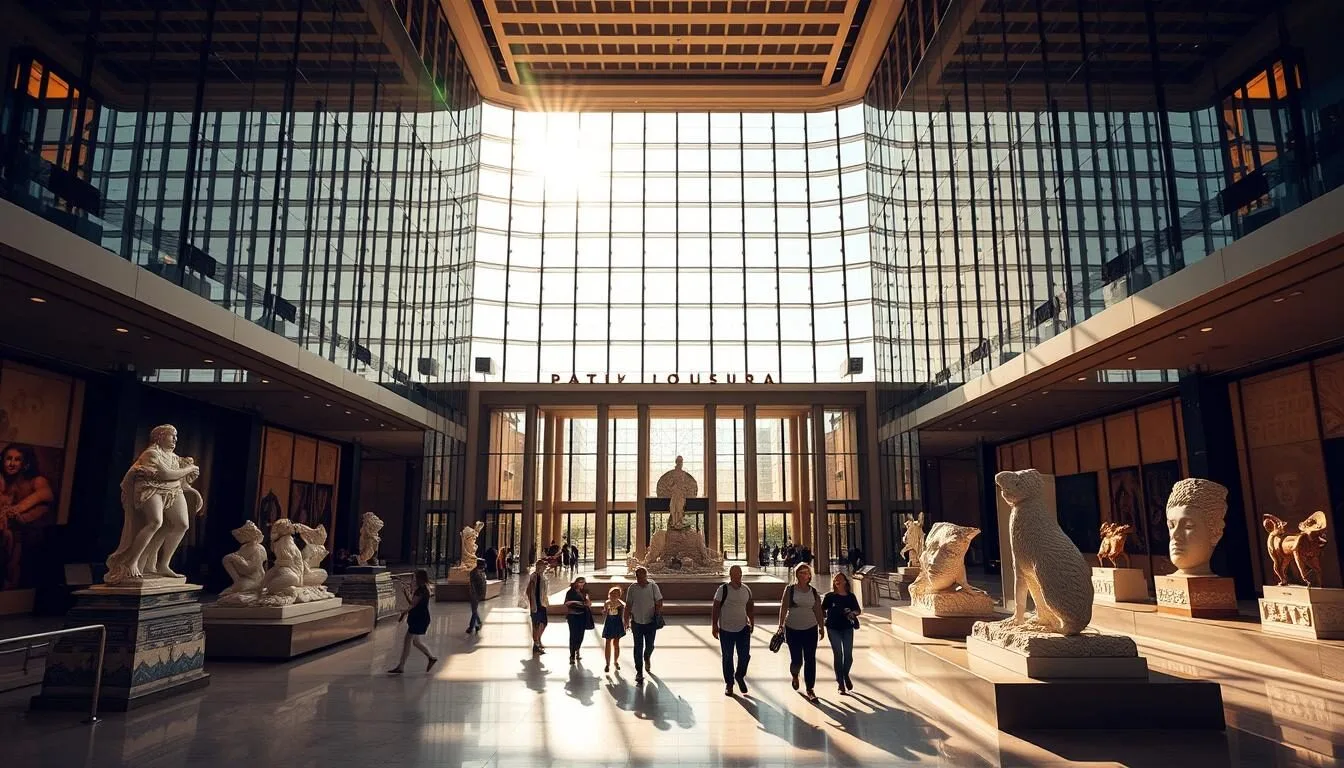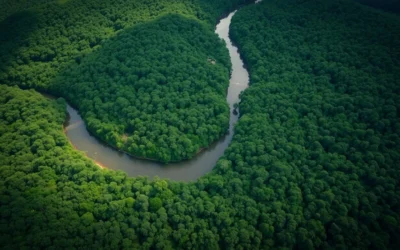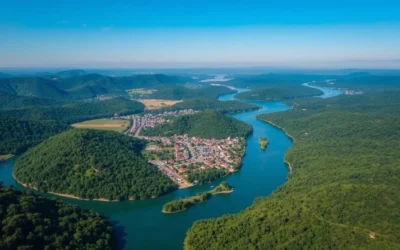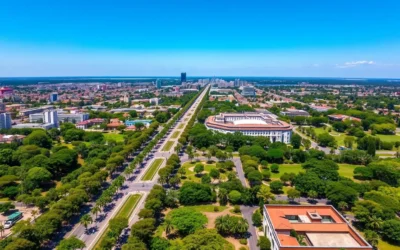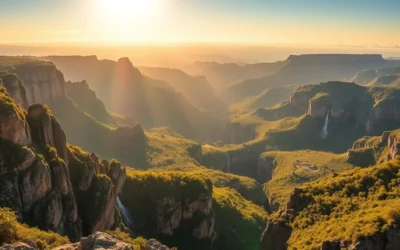✓ Accommodations✓ Flights✓ Rental Cars✓ Tours & Activities
You are about to explore one of the most culturally rich cities in South America, a planned city that is home to numerous world-class museums. With a collection of museums that showcase Brazilian art and history, Brasilia is a must-visit destination for anyone interested in culture and history.
As a UNESCO World Heritage site, Brasilia’s unique architectural ensemble, designed by Lúcio Costa and Oscar Niemeyer, provides a fascinating backdrop for its museums and cultural institutions. You will be able to review the list of the best places to visit in this vibrant city, experiencing the rich cultural landscape that Brasilia has to offer.
By visiting these museums, you will gain a deeper understanding of the city’s history and artistic heritage, making your trip to Brasilia an unforgettable experience.
Exploring Brasilia’s Cultural Landscape
As you step into Brasilia, you’re not just entering a city, you’re immersing yourself in a cultural landscape that’s as vibrant as it is historic. Brasilia, the capital of Brazil since 1960, is a masterpiece of modernist architecture and urban design, offering a unique cultural experience that blends history, art, and innovative design.
![]()
The Architectural Marvel of Brazil’s Capital
Brasilia’s architecture is a testament to the vision of urban planner Lúcio Costa and architect Oscar Niemeyer. The city’s design is characterized by bold, futuristic structures that have become iconic symbols of Brazil’s cultural identity. As you explore the city, you’ll notice how the architecture influences the overall cultural landscape, creating a place where art and functionality blend seamlessly. The buildings, such as the National Congress and the Cathedral of Brasília, are not just impressive structures; they are also significant cultural objects that reflect the city’s history and values.
When you visit Brasilia, take a moment to appreciate the thought behind its design. The city’s layout is designed to promote a sense of community and cultural engagement, with public spaces that encourage social interaction. This thoughtful design has contributed to Brasilia’s status as a cultural hub, making it an ideal place to experience Brazil’s rich heritage.
Brasilia’s UNESCO World Heritage Status
In 1987, Brasilia was designated a UNESCO World Heritage site, recognizing its cultural and architectural significance. This status highlights the city’s importance as a cultural landmark and underscores its value as a cultural center. The UNESCO designation has also played a crucial role in preserving Brasilia’s architectural integrity and promoting its cultural heritage.
As you explore Brasilia, you’ll discover how its cultural landscape has evolved over the years. The city’s museums, for instance, have adapted to changing cultural and societal needs, offering a diverse range of exhibitions that cater to both local and international audiences. This evolution is a testament to Brasilia’s commitment to preserving its history while embracing the future.
The Evolution of Museums in Brasilia
The museum scene in Brasilia has undergone significant transformations since the city’s inauguration in 1960. Initially, museums focused on showcasing national heritage, but over time, they have evolved to include international exhibitions and contemporary art forms. Today, Brasilia’s museums are vibrant spaces that engage diverse audiences and offer a unique perspective on Brazil’s cultural identity.
As you review the various museums in Brasilia, you’ll notice how they have adapted to serve both local communities and international tourists. The museums offer a range of experiences, from interactive exhibitions to traditional displays of artifacts. This diversity ensures that there’s something for everyone, making a visit to Brasilia’s museums a memorable part of your trip.
In conclusion, Brasilia’s cultural landscape is a rich tapestry of history, art, and architecture. As you explore the city, you’ll discover the many facets of its cultural identity, from its iconic buildings to its vibrant museums. Whether you’re interested in history, art, or simply experiencing a new place, Brasilia offers a unique and enriching cultural experience.
The National Museum of Brasilia (Museu Nacional)
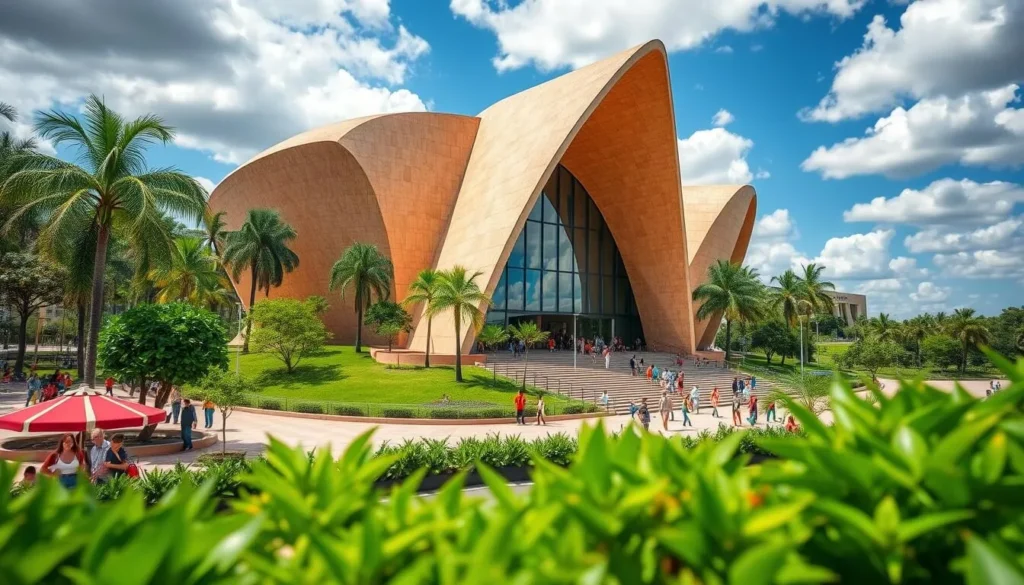
Located in the heart of Brasilia, the National Museum Honestino Guimarães is a masterpiece of modern architecture and a treasure trove of art and history. As you step into this iconic building, you are greeted by a striking structure that embodies the futuristic vision of Brasilia’s founders.
Oscar Niemeyer’s Architectural Masterpiece
The National Museum of Brasilia is a testament to Oscar Niemeyer’s architectural genius. The building’s design is characterized by its bold curves and minimalist aesthetic, reflecting Niemeyer’s signature style. As you explore the museum’s interior, you’ll notice the seamless integration of art and architecture, creating a unique and captivating experience.
The museum’s architecture is not just a backdrop for its collections; it’s an integral part of the visitor experience. The building’s design encourages visitors to explore and interact with the space, fostering a deeper connection with the art and history on display.
Contemporary Art Collections and Exhibitions
The National Museum of Brasilia is renowned for its contemporary art collections and exhibitions. The museum features a diverse range of works by Brazilian and international artists, showcasing the latest trends and innovations in modern art. From paintings and sculptures to installations and multimedia exhibits, the museum’s collections offer something for every art enthusiast.
One of the highlights of the museum’s collections is its rotating exhibitions, which provide a fresh perspective on contemporary art. These exhibitions are carefully curated to showcase the most exciting and thought-provoking works, ensuring that there’s always something new to discover.
Visitor Information and Highlights
Planning your visit to the National Museum of Brasilia is easy with the right information. The museum is open from 9:00 AM to 6:00 PM, Tuesday through Sunday, and admission is free, although some special exhibitions may require a ticket. To make the most of your visit, consider guided tours, which offer insightful commentary on the museum’s collections and exhibitions.
Some of the must-see highlights include the museum’s permanent collection, featuring works by some of Brazil’s most celebrated artists, and the temporary exhibitions, which showcase the latest in contemporary art. Be sure to explore the museum’s café and bookstore, which offer a relaxing atmosphere and a chance to take home a unique souvenir.
Memorial JK: Tribute to Brasilia’s Founder
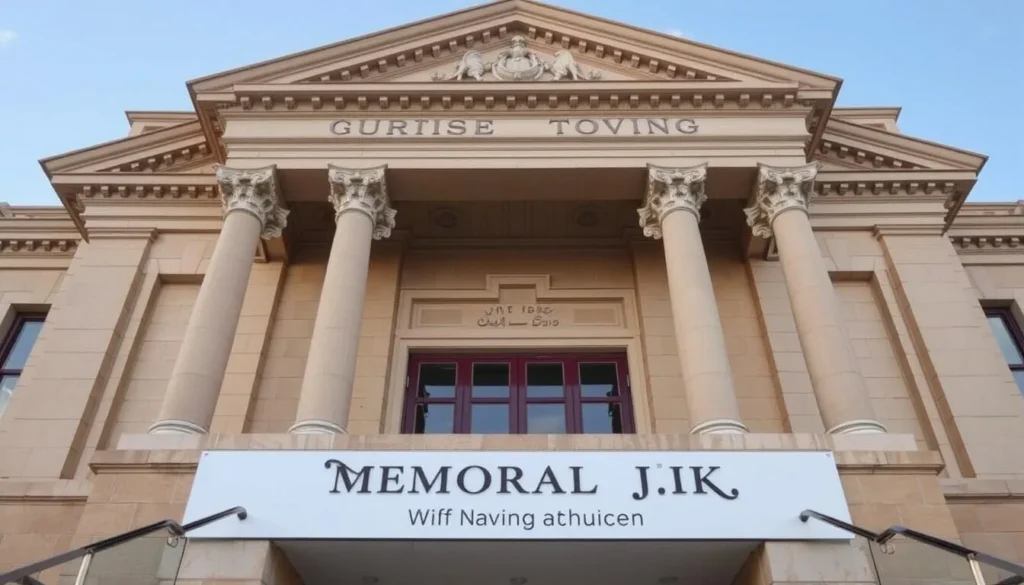
As you explore Brasilia, you’ll discover the Memorial JK, a monument to the city’s visionary leader, Juscelino Kubitschek. This memorial is dedicated to preserving the history and legacy of Kubitschek, who played a pivotal role in the construction of Brasilia.
The Life and Legacy of Juscelino Kubitschek
Juscelino Kubitschek was a charismatic leader who served as the president of Brazil from 1955 to 1961. During his presidency, he implemented a bold plan to construct a new capital city, Brasilia, which was inaugurated in 1960. Kubitschek’s vision for Brasilia was not only to create a new administrative center but also to symbolize the country’s progress and modernity.
The Memorial JK provides a comprehensive overview of Kubitschek’s life, from his early days to his presidency and the construction of Brasilia. You can explore exhibits featuring personal belongings, documents, and photographs that highlight his achievements and challenges.
Architectural Features and Exhibits
The Memorial JK is an architectural marvel designed by renowned architects. The building’s design is symbolic, representing the ideals and aspirations of Kubitschek’s era. As you visit the memorial, you’ll be impressed by its unique architecture and the extensive collection of exhibits.
The exhibits include a wide range of artifacts, such as Kubitschek’s presidential sash, his personal library, and the original scale model of Brasilia. You’ll also find a collection of gifts received by Kubitschek from world leaders and citizens, showcasing his international relationships and popularity.
One of the highlights of the memorial is the photographic archive that documents the construction of Brasilia. This archive provides a fascinating glimpse into the city’s birth, showcasing the challenges and triumphs of the construction process.
Must-See Artifacts and Visitor Tips
When visiting the Memorial JK, there are several must-see artifacts to look out for. These include Kubitschek’s personal belongings, the original scale model of Brasilia, and the gifts he received from around the world.
To make the most of your visit, plan to spend a few hours exploring the memorial. It’s recommended to take a guided tour to gain deeper insights into the exhibits and the history they represent. Additionally, consider visiting during less crowded times to fully appreciate the collections.
Nearby attractions complement a visit to Memorial JK, creating a more comprehensive understanding of Brasilia’s founding. Be sure to explore these sites to enhance your overall experience.
Museu de Valores do Banco Central
Discover the rich history and cultural significance of Brazil’s economic development at the Museu de Valores do Banco Central.
The Numismatic Collection
The museum features an extensive collection of coins, banknotes, and other financial instruments that date back to the 18th century.
Brazilian Art and Gold Reserves
The museum is home to a diverse collection of Brazilian art and a significant gold reserve, providing a unique insight into the country’s economic history.
Memorial dos Povos Indígenas (Indigenous Peoples Memorial)
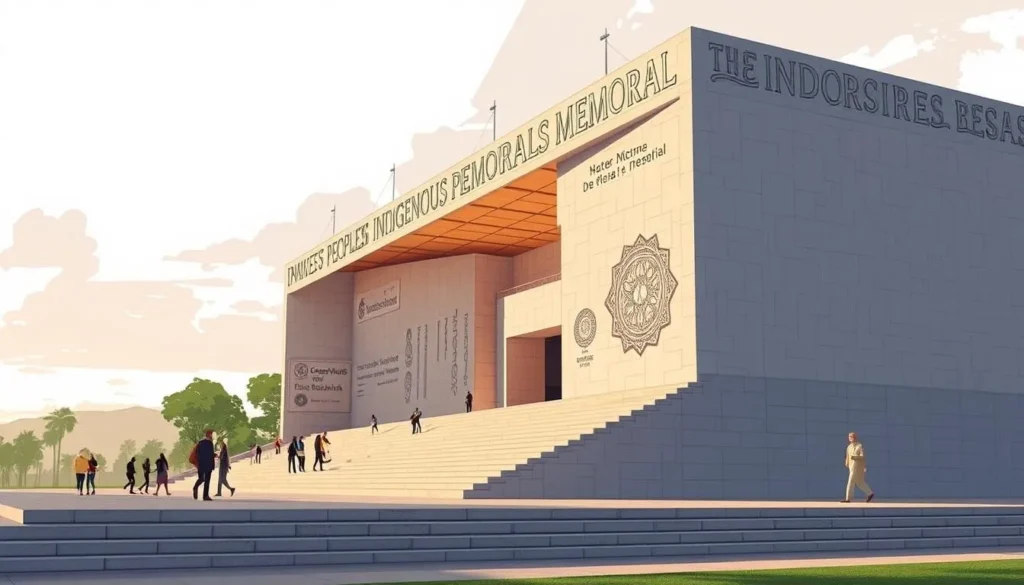
Brasilia’s Indigenous Peoples Memorial is a unique institution dedicated to preserving and promoting the cultural identity of indigenous communities across Brazil. As you visit this significant cultural landmark, you are immersed in the rich history and anthropology of Brazil’s indigenous cultures.
Celebrating Brazil’s Indigenous Heritage
The memorial serves as a living cultural center where you can interact with indigenous representatives and learn directly from community members. It’s a place where the vibrant traditions and stories of Brazil’s native populations come alive, offering a unique insight into the country’s diverse cultural heritage.
Indigenous heritage is celebrated through various exhibitions and programs that highlight the history, struggles, and achievements of indigenous peoples. By exploring these exhibitions, you gain a deeper understanding of the cultural practices and worldviews of Brazil’s indigenous communities.
Architectural Significance and Collection Highlights
The architectural design of the Memorial dos Povos Indígenas is noteworthy, reflecting the cultural themes it represents. The collection includes a wide range of artifacts, artworks, and historical objects that tell the story of indigenous cultures in Brazil.
As you explore the memorial, you’ll discover traditional crafts, clothing, and other cultural items that showcase the diversity and richness of indigenous heritage. The collection highlights the resilience and creativity of indigenous peoples, offering a powerful testament to their enduring cultural identity.
Cultural Events and Educational Initiatives
The memorial hosts a variety of cultural events, including traditional ceremonies, dance performances, and music recitals, which provide a unique opportunity to experience the vibrant cultural practices of indigenous communities. Additionally, educational programs are designed to teach visitors about indigenous worldviews, sustainable practices, and traditional knowledge systems.
By participating in these events and programs, you can gain a deeper appreciation for the cultural heritage of Brazil’s indigenous peoples and contribute to the ongoing dialogue about their place in contemporary society.
Pantheon of the Fatherland and Freedom (Panteão da Pátria e da Liberdade)
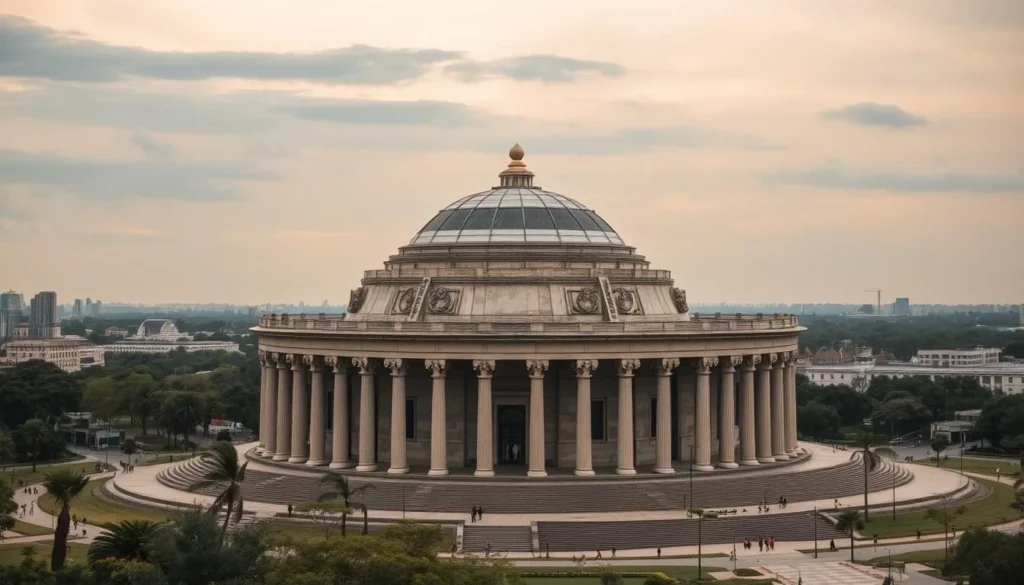
The Pantheon of the Fatherland and Freedom in Brasilia is a monumental tribute to Brazil’s national heroes. This significant landmark is dedicated to honoring the individuals who have played a crucial role in shaping the country’s history and identity.
Honoring Brazilian National Heroes
The Pantheon is a sacred space that pays tribute to the heroes who have contributed to Brazil’s development as a nation. The honored individuals are remembered for their bravery, leadership, and dedication to the country’s progress. As you explore the Pantheon, you will gain a deeper understanding of the historical context and significance of these national heroes.
The exhibitions within the Pantheon provide a comprehensive overview of the lives and achievements of these remarkable individuals. Through a collection of artifacts, documents, and personal belongings, the Pantheon tells the story of Brazil’s history and the people who shaped it.
The Book of Steel and Architectural Symbolism
The Pantheon’s architectural design is a notable aspect of its overall significance. The structure is symbolic of the values and principles that Brazil holds dear. The “Book of Steel” is a striking feature of the Pantheon, representing the country’s history and the stories of its heroes.
The architectural symbolism is not limited to the Book of Steel; the entire structure is designed to evoke a sense of reverence and respect for the national heroes. As you explore the Pantheon, you will appreciate the thoughtful design and the way it enhances the overall experience.
Visitor Experience and Historical Context
When visiting the Pantheon of the Fatherland and Freedom, you can expect a meaningful and enriching experience. The guided tours provide valuable insights into the history and significance of the Pantheon, while the exhibitions offer a unique perspective on Brazil’s national identity.
To make the most of your visit, consider combining your trip to the Pantheon with other nearby monuments and institutions. This will provide a more comprehensive understanding of Brasilia’s civic center and its historical context.
Catetinho: The First Presidential Residence
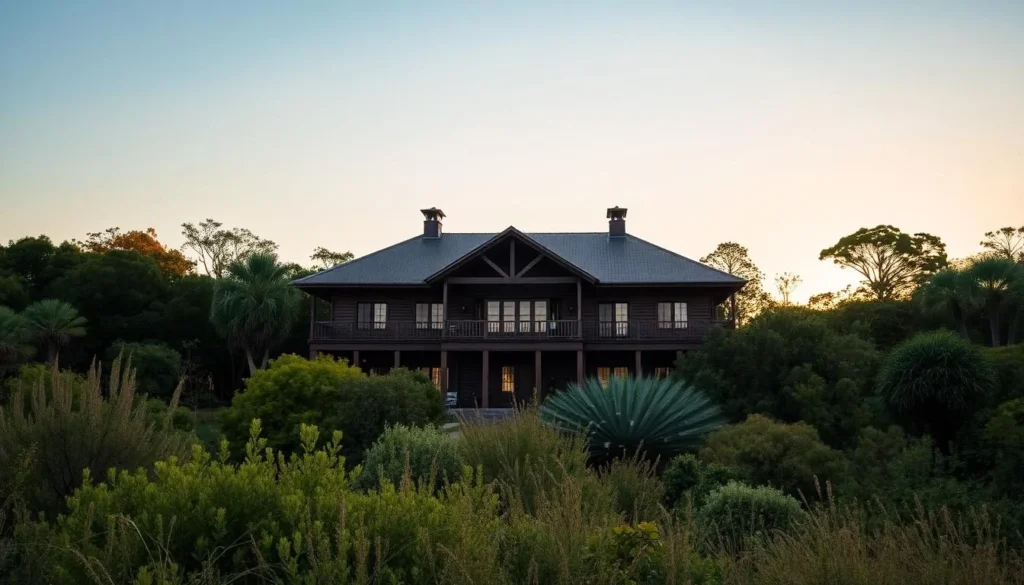
As you visit Catetinho, you’re stepping into a piece of Brasilia’s history, surrounded by the natural beauty of the cerrado. This site, located about 30 kilometers from central Brasilia, is a must-visit place for anyone interested in the history and development of Brazil’s capital city.
The Wooden Palace and Its Historical Significance
Catetinho, also known as the “Little House,” was the first presidential residence in Brasilia, built in 1956. It served as the temporary home for President Juscelino Kubitschek during his visits to the construction site of the new capital. The wooden structure was designed to be simple yet functional, reflecting the provisional nature of the early days of Brasilia. Today, it stands as a museum, offering insights into the history of Brasilia’s construction and the role of the president in this process.
The historical significance of Catetinho cannot be overstated. It represents the initial steps taken towards establishing Brasilia as the capital of Brazil, a project that was both ambitious and groundbreaking. Visitors to the site can explore the preserved space and learn about the challenges faced during the construction of Brasilia.
Preserved Artifacts and Presidential History
Inside the Catetinho museum, visitors can find a collection of artifacts and personal belongings of President Juscelino Kubitschek, providing a personal touch to the historical narrative. The review of these artifacts offers a deeper understanding of the president’s role in the development of Brasilia and the challenges he faced. The museum also includes exhibits on the construction process, showcasing the efforts and achievements of the people involved in building the new capital.
The story of Catetinho is closely tied to the broader history of Brasilia, and a visit to this site is an essential part of understanding the city’s development. As you explore the museum and its surroundings, you gain a unique perspective on the time and effort invested in creating Brasilia.
Natural Surroundings and Visitor Information
One of the unique aspects of Catetinho is its setting within the cerrado, a savanna-like vegetation that characterizes much of Brazil’s central plateau. The site includes a natural spring that provided water for the presidential residence, adding to the charm of the location. Visitors can enjoy the natural beauty of the area, making it a pleasant trip or visit for those interested in both history and nature.
For those planning to visit Catetinho, it is located in Park Way, about 30 kilometers from central Brasilia. The site is accessible by car, and there are guided tour options available, enhancing the overall review of the experience. Visitors are advised to check the opening hours and admission information in advance to plan their trip accordingly.
When planning your visit, consider combining it with other nearby attractions to make the most of your trip to the area. Catetinho offers a unique list of activities and experiences, from exploring the museum to enjoying the natural surroundings.
Espaço Lúcio Costa: Understanding Brasilia’s Design
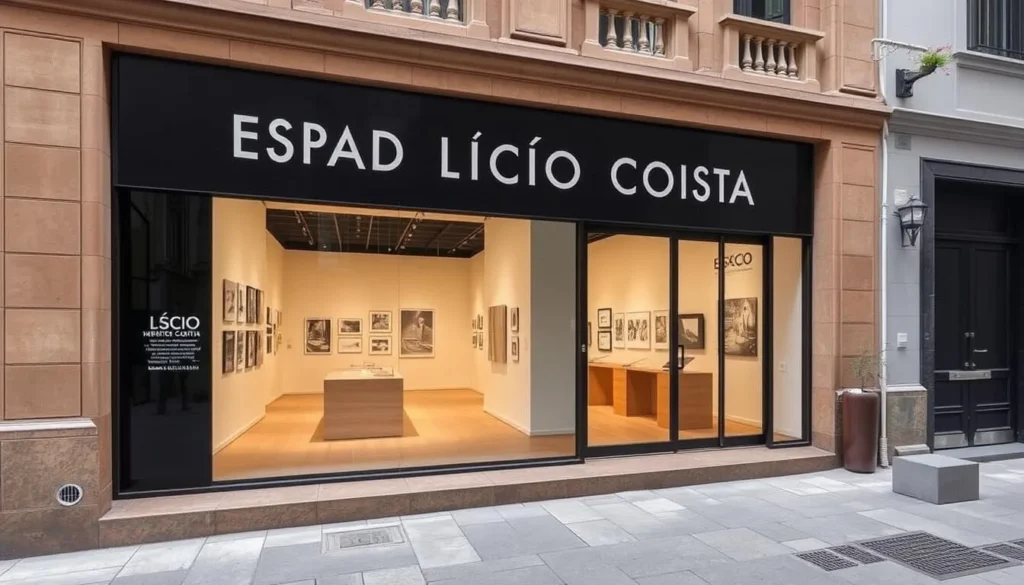
If you’re curious about Brasilia’s design, Espaço Lúcio Costa offers a deep dive into the city’s conceptual framework. This museum is dedicated to Lúcio Costa, the urban planner behind Brasilia, and provides a comprehensive understanding of the city’s layout and the ideas that shaped it.
The Urban Planner Behind Brasilia
Lúcio Costa was a visionary urban planner whose design for Brasilia was not just about creating a new capital but about crafting a city that embodied the ideals of modernity and progress. His Pilot Plan, which won the competition in 1957, laid the foundation for the city’s unique layout.
Costa’s vision was influenced by modernist principles, emphasizing functionality, simplicity, and a connection with nature. The city’s design was intended to be efficient, with designated areas for different activities, and to promote a sense of community among its residents.
The Pilot Plan and City Models
The Pilot Plan is a cornerstone exhibit at Espaço Lúcio Costa. The museum showcases detailed models and explanations of how the plan was developed and implemented. You can explore the intricacies of Costa’s design, including the use of a cross-shaped layout to organize the city’s main functions.
The museum also features multimedia presentations and archival footage that bring the story of Brasilia’s creation to life. These resources provide a deeper understanding of the challenges faced during the city’s construction and the innovative solutions that were implemented.
Educational Resources and Visitor Experience
Espaço Lúcio Costa is not just a museum; it’s an educational hub that offers guided tours and programs designed to help visitors appreciate the intentional design of Brasilia. Whether you’re a student, an architecture enthusiast, or just a curious traveler, the museum provides a wealth of information and insights.
The museum shop is another highlight, offering specialized publications on architecture and urban planning, as well as souvenirs that reflect Brasilia’s unique design. You can also explore special exhibitions and events that periodically supplement the permanent collection, offering new perspectives on Costa’s work and legacy.
As you explore Espaço Lúcio Costa, you’ll gain a deeper appreciation for the thought and planning that went into creating Brasilia. It’s a place that not only showcases the city’s history but also invites you to understand the cultural and architectural significance of this modernist masterpiece.
Caixa Cultural is a vibrant cultural center in Brasília that offers a unique experience for visitors of all ages. The center features rotating exhibitions, interactive installations, and engaging programs.
Rotating Exhibitions and Cultural Programming
The center features rotating exhibitions that showcase a wide range of artistic disciplines, from visual arts to performance and music. With a focus on showcasing local and international artists, Caixa Cultural provides a platform for creative expression and innovation.
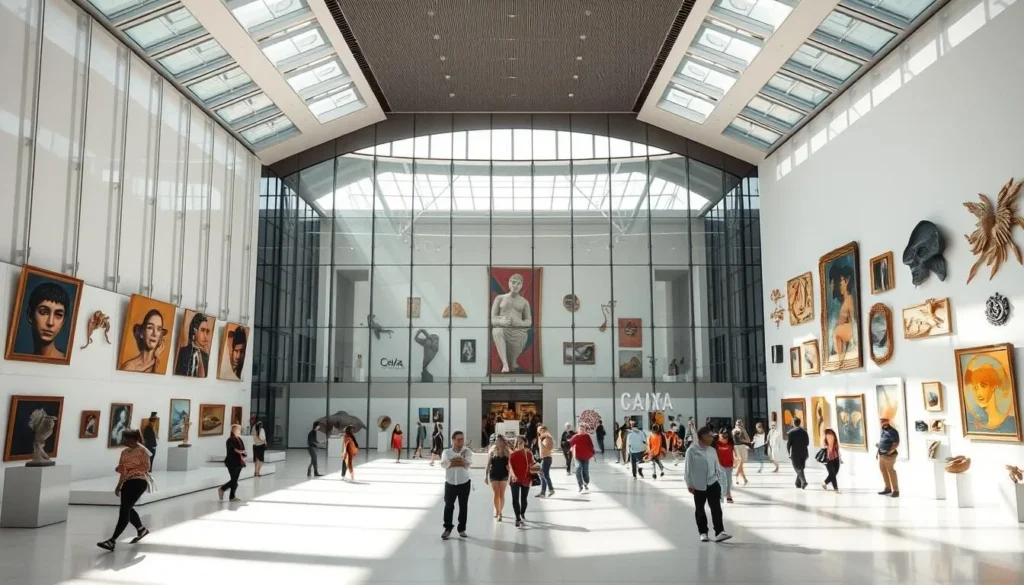
Educational Programs and Visitor Information
To plan your visit, you can check the Caixa Cultural website for up-to-date information on hours, admission, and events. The center offers a range of educational programs, including workshops and guided tours, designed to enhance your cultural experience.
Museu de Arte de Brasília (MAB)
The Museu de Arte de Brasília (MAB) is a cultural institution dedicated to showcasing the rich and diverse world of Brazilian art. Located in the heart of Brasília, the museum has become a landmark for art lovers and a testament to the city’s vibrant cultural scene.
Evolution of Brazilian Modern Art
The MAB is renowned for its extensive collection of modern and contemporary Brazilian art. As you explore the museum, you’ll discover a vast array of works that reflect the country’s artistic evolution. From the early 20th-century modernist movements to the contemporary installations of today, the museum’s collection provides a comprehensive overview of Brazil’s artistic development.
Highlights of the Collection
The museum’s collection is a treasure trove of Brazilian art, featuring pieces by some of the country’s most celebrated artists. The collection includes a wide range of works, from paintings and sculptures to prints and photographs, showcasing the diversity and richness of Brazilian art.
Future Directions
Looking to the future, the MAB is committed to continuing its mission to promote and preserve Brazilian art. With plans for renovation and expansion, the museum aims to enhance the visitor experience and make art more accessible to a broader audience.
Museu Vivo da Memória Candanga
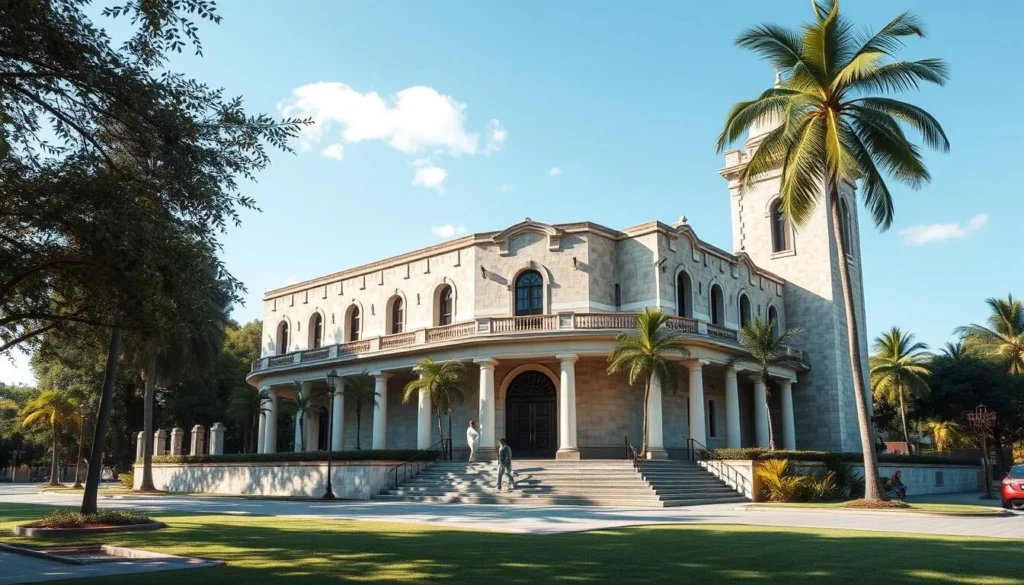
As a living museum, the Museu Vivo da Memória Candanga preserves the memories of Brasilia’s builders. This unique cultural institution is dedicated to showcasing the history and cultural heritage of the city.
Preserving the Memory of Brasilia’s Builders
The Museu Vivo da Memória Candanga is committed to preserving the history of the candangos, the workers who built Brasilia. The museum’s collections and exhibitions provide a glimpse into the lives of these individuals, highlighting their contributions to the city’s development.
You can explore the museum’s collections, which include artifacts, photographs, and personal stories of the candangos. The museum’s efforts to preserve the memory of Brasilia’s builders are a valuable resource for understanding the city’s history and cultural identity.
The Former Hospital and Historical Significance
The Museu Vivo da Memória Candanga is housed in a former hospital building, which is a significant historical landmark in Brasilia. The building itself is a testament to the city’s history and development.
You can learn about the hospital’s history and its role in the construction of Brasilia. The museum’s exhibitions provide a unique perspective on the city’s development, highlighting the challenges faced by the candangos and the importance of their contributions.
Cultural Activities and Artisan Workshops
The Museu Vivo da Memória Candanga is not just a museum; it’s a living, breathing cultural institution that hosts regular cultural activities, performances, and workshops. You can participate in artisan workshops, where you can learn traditional crafts such as woodworking, weaving, and ceramics.
The museum’s cultural activities and exhibitions celebrate the cultural diversity brought to Brasilia by migrants from different regions of Brazil. You can experience the city’s rich cultural heritage through the museum’s events and exhibitions, which showcase the traditions and customs of the candangos.
Darcy Ribeiro Memorial
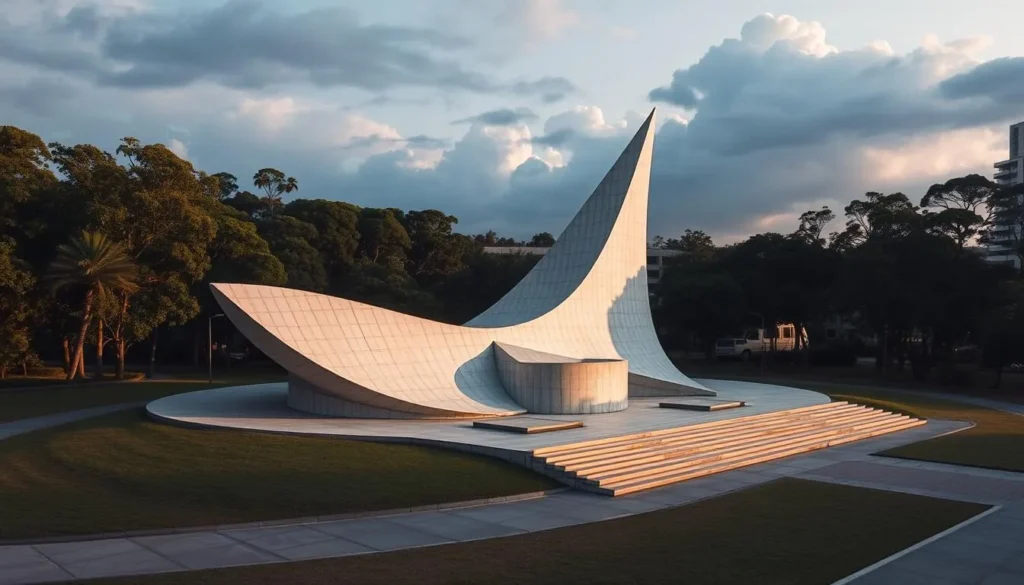
As a tribute to Darcy Ribeiro’s contributions to Brazilian culture and education, the memorial in Brasília stands as a vital center for academic and cultural activities. Located in the heart of the city, this memorial is dedicated to preserving the legacy of a renowned anthropologist and educator.
The Legacy of a Brazilian Anthropologist and Educator
Darcy Ribeiro was a pivotal figure in Brazilian academia, known for his work in anthropology and education. His contributions to understanding Brazilian culture and society are immeasurable. The memorial serves as a testament to his life’s work, showcasing his achievements and the impact he had on Brazilian education and cultural heritage.
Key Aspects of Darcy Ribeiro’s Legacy:
- His work in anthropology, which provided deep insights into Brazilian indigenous cultures.
- His role in education reform, aiming to make education more accessible and relevant to Brazilian society.
- His influence on cultural policies, promoting the preservation of Brazil’s rich cultural diversity.
The memorial not only honors his memory but also continues his work by supporting academic research and cultural activities.
Architectural Features and Exhibition Spaces
The Darcy Ribeiro Memorial is not only significant for its cultural and academic importance but also for its architectural design. The building itself is a marvel of modern architecture, reflecting the innovative spirit of Brasília.
The memorial houses various exhibition spaces that showcase Darcy Ribeiro’s life and work. These exhibitions include personal artifacts, documents, and interactive displays that provide visitors with a comprehensive understanding of his contributions.
Exhibition Highlights:
- Personal belongings and correspondence of Darcy Ribeiro.
- Exhibits on his anthropological work, including photographs and field notes.
- Interactive displays that explore his role in education reform.
Academic Resources and Visitor Information
The memorial is a rich resource for researchers and visitors alike. It houses a comprehensive research library, archives, and digital collections that are available for academic purposes.
Academic Resources:
- Research library with an extensive collection of works by and about Darcy Ribeiro.
- Archives containing documents, letters, and other historical materials.
- Digital collections that provide access to Ribeiro’s writings and related scholarship.
Visitors can access guided tours, and the memorial offers various educational programs for different audiences. For practical information, including location, opening hours, and accessibility features, visitors can refer to the memorial’s official resources.
To plan your visit or explore the academic resources further, you can about the services and opportunities available at the Darcy Ribeiro Memorial.
Renato Russo Cultural Space
The Renato Russo Cultural Space is a vibrant cultural center dedicated to the life and work of the renowned Brazilian musician Renato Russo. As a hub for music, art, and community activities, this space offers a unique experience for visitors of all ages.
Celebrating Renato Russo’s Legacy
Renato Russo was a celebrated Brazilian musician and the lead vocalist of the band Legião Urbana. The Renato Russo Cultural Space is dedicated to preserving his legacy and promoting the cultural heritage of Brazil.
Exploring the Space
The cultural space features a range of exhibits, performances, and activities that showcase Russo’s life and work. Visitors can explore the history of Legião Urbana, learn about the cultural context of Russo’s music, and engage with interactive displays that highlight his most popular songs and albums.
Community and Events
The Renato Russo Cultural Space offers a range of community programs, including music workshops, classes, and cultural events. These programs promote the cultural heritage of Brazil and provide a platform for local artists and musicians to showcase their talents.
Visitors can also enjoy the on-site café and bookstore, which feature a selection of books, CDs, and merchandise related to Renato Russo and Brazilian music.
Brasilia, Brazil: Best Museums for Special Interests
The city of Brasilia boasts an array of specialized museums that are sure to captivate visitors with specific interests. From science and technology to military and aviation, and a range of niche exhibits, Brasilia’s museums offer a diverse cultural experience.
Science and Technology Museums
Brasilia is home to several museums that focus on science and technology, providing interactive and educational experiences for visitors. One such institution is the National Museum of Brasilia, which, while not exclusively a science museum, hosts exhibitions that touch on scientific themes and technological advancements.
For a more specialized experience, the Ciencia e Tecnologia Museum offers insights into various scientific disciplines, featuring exhibits that are both informative and engaging. Visitors can explore the wonders of science through interactive displays and experiments.
| Museum Name | Focus Area | Notable Exhibits |
|---|---|---|
| National Museum of Brasilia | Science, Art, Culture | Contemporary Art, Historical Artifacts |
| Ciencia e Tecnologia Museum | Science, Technology | Interactive Science Exhibits, Technological Innovations |
Military and Aviation Museums
For those interested in military history and aviation, Brasilia offers several museums that showcase a range of artifacts and exhibits. The Museu Aeroespacial (MUSAL) is a prominent institution that documents the history of aviation and space exploration in Brazil.
Visitors to MUSAL can explore a vast collection of aircraft, including historical planes and military jets, as well as exhibits on the development of aviation technology. The museum provides a comprehensive look at Brazil’s aviation history and its contributions to aerospace exploration.
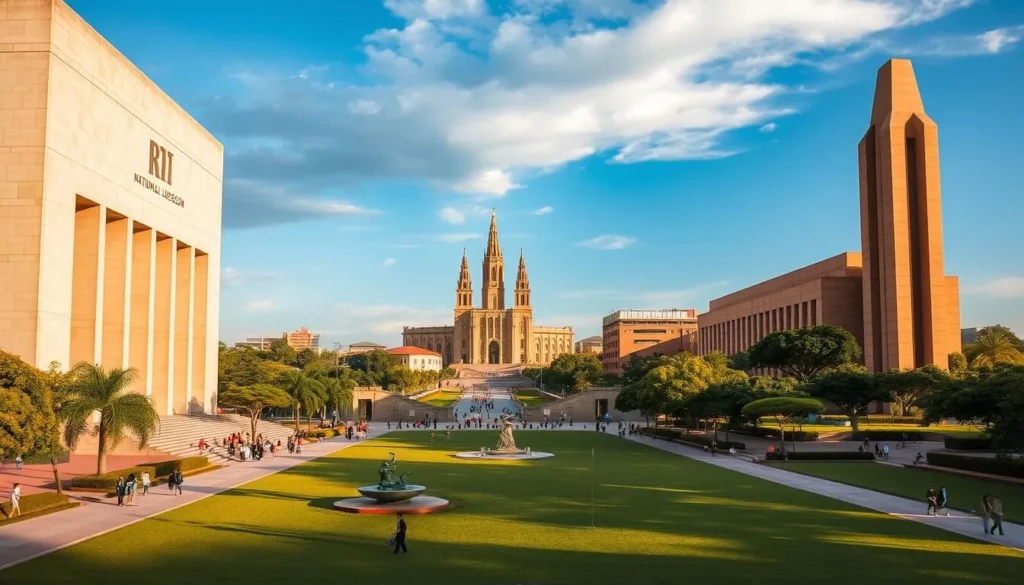
Specialized Collections and Niche Exhibits
Beyond the more prominent museums, Brasilia is also home to a variety of specialized collections and niche exhibits that cater to specific interests. For example, the Postal Museum offers a unique look at the history of Brazil’s postal service, featuring an impressive collection of stamps and postal artifacts.
Another notable institution is the Museum of the Brazilian Central Bank’s Money Collection, which showcases the evolution of currency in Brazil and houses rare numismatic specimens. These specialized museums contribute to the rich cultural tapestry of Brasilia, providing visitors with a deeper understanding of specific aspects of Brazilian history and culture.
In addition to these museums, there are also smaller, less-known collections housed within larger institutions or university departments. These offer in-depth explorations of specialized subjects, further enriching the cultural landscape of the city.
Community museums that focus on local history, ethnic heritage, or specific cultural traditions represented in Brasilia’s diverse population also play a vital role. Temporary exhibitions and pop-up museums periodically offer fresh perspectives on specialized topics throughout the city, ensuring that there’s always something new to discover.
Planning Your Museum Tour in Brasilia
As you prepare for your cultural journey through Brasilia, planning your museum tour is essential to make the most of your trip. Brasilia, known for its modernist architecture and rich cultural heritage, is home to numerous museums that offer a deep dive into the city’s history, art, and culture.
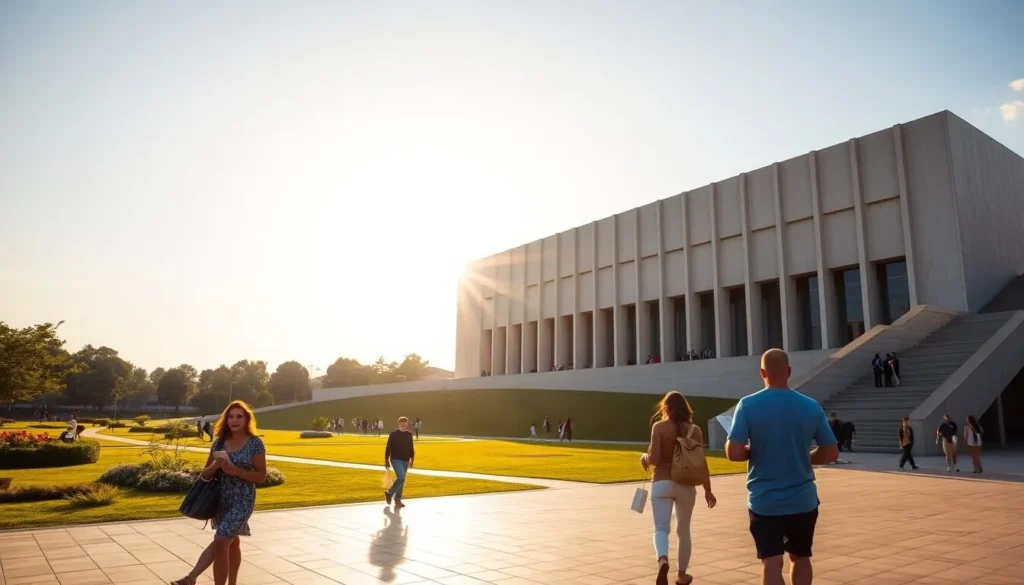
Optimal Routes and Transportation Options
To efficiently visit Brasilia’s museums, understanding the optimal routes and transportation options is crucial. The city is designed with a well-organized layout, making it relatively easy to navigate. You can use public transportation, including buses, or opt for ride-sharing services and taxis. For a more personalized experience, consider renting a car or hiring a private driver for the day.
Many museums are located in the city’s central areas, such as the National Museum of Brasilia and the Memorial JK, making them easily accessible on foot or by a short drive. Planning your route in advance can help you make the most of your time and reduce travel stress.
- Use online maps or travel apps to plan your route.
- Consider purchasing a city tour pass that includes transportation.
- Check the opening hours and locations of the museums you wish to visit.
Museum Passes and Discount Opportunities
Brasilia offers various museum passes and discount opportunities that can enhance your visit. Many museums provide discounted or free admission on certain days of the week or month. Additionally, some museums offer combined tickets or passes that grant access to multiple attractions at a reduced rate.
For example, the Museu de Arte de Brasília (MAB) occasionally offers free admission on the first Saturday of every month. It’s also worth checking if any cultural events or festivals are happening during your visit, as these can sometimes include special museum access.
- Research museum websites for special offers and discounts.
- Look into city passes that include museum entry.
- Consider visiting during off-peak hours or seasons for a more relaxed experience.
Seasonal Considerations and Special Events
Brasilia’s climate and cultural calendar can significantly impact your museum visit. The city has a dry season and a wet season, with the dry season (from May to September) being the most comfortable for tourists. Additionally, certain times of the year bring special events and exhibitions that can enhance your museum experience.
For instance, Museum Week and Cultural Heritage Day are events that might interest you, offering unique exhibitions, workshops, and guided tours. Planning your visit around these events can provide a richer cultural experience.
Understanding the academic calendar can also be beneficial, as some museums offer special programming for students during school terms. Visiting during less crowded seasons can provide a more personalized experience, with quieter galleries and more attentive staff.
- Check the local event calendar to catch special exhibitions or events.
- Plan around the academic calendar for potentially more engaging museum activities.
- Consider nighttime museum events or extended hours for a different perspective.
Conclusion: The Cultural Richness of Brasilia’s Museums
As you explore Brasilia, you’ll discover a city that masterfully blends modernity with heritage. The city’s museums offer a fascinating glimpse into Brazil’s history, art, and culture. The Museu Nacional and Memorial JK are just a couple of examples that provide a comprehensive look at the country’s past and the visionaries who shaped it.
Brasilia’s museums are not just repositories of artifacts; they’re vibrant cultural centers showcasing the city’s diverse heritage. The museums offer a unique perspective on Brazilian culture, and by visiting them, you’ll gain a deeper understanding of the complex forces that have shaped the city and its people.
The city’s museums are a testament to its commitment to preserving and promoting its cultural identity. With their striking modernist architecture and interactive exhibits, they offer an engaging and immersive experience. The museums are also committed to community engagement and education, providing a platform for cultural exchange and understanding.
In conclusion, Brasilia’s museums are a must-visit destination for anyone interested in exploring the city’s rich cultural heritage. By visiting the museums, you’ll gain a deeper understanding of Brazil’s history, culture, and identity. The city’s museums are a true reflection of its vibrant cultural scene, and they are sure to leave a lasting impression on your visit.
The city’s museums are a great place to start your journey, with a wealth of information and insights into the city’s history, art, and culture. So, take a step into the world of Brazilian culture and discover the wonders that Brasilia’s museums have to offer.
By exploring the museums, you’ll be able to experience the city’s vibrant cultural identity firsthand. You’ll be able to appreciate the city’s rich history, its cultural heritage, and its people’s way of life.
The museums are a great way to experience the city’s cultural diversity and to gain a deeper understanding of Brazil’s complex history and identity. So, be sure to include a visit to one of Brasilia’s many museums in your itinerary.
—
The above is subject to change.
Check back often to TRAVEL.COM for the latest travel tips and deals.
